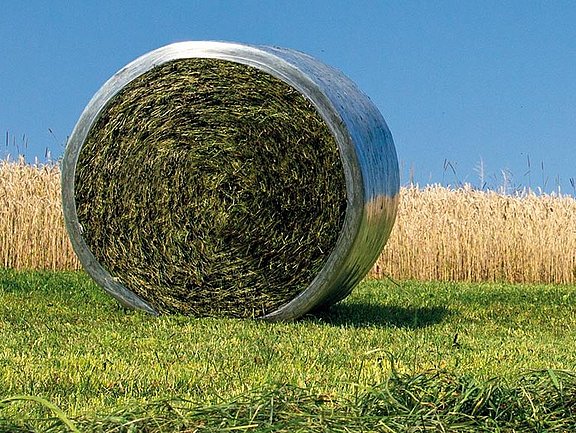Quality silage – this is how you achieve it
The milk and meat yield of cattle and cows varies greatly with the quality of the silage fed to the animals. The better the silage, the lower the need to add concentrate feed to enhance performance. But, what actually is the essence of premium-quality silage? And, most importantly, what do you need to keep in mind while making it, so that you will eventually feed your animals only the best silage?
Optimum time to harvest
Harvesting large areas poses a particular challenge given the difficulty to reap the entire harvest at a consistently high quality. Especially the task of ensuring uniform and optimal compaction in bunker silos often proves to be particularly daunting. Noxious fermentation including losses in nutrients are a common occurrence.
The advantage you have when producing round bale silage is that you can respond with greater flexibility to determine the right time to cut as well as the best possible weather conditions.
This benefit enables you to harvest basic feed of ideal quality from all areas.
More information on this subject
Clean feed
The optimum fermentation of the silage hinges on a crude ash portion that is kept as low as possible. The following must be observed to attain a minimum crude ash portion:
Meadow care
You should always harrow / groom meadows in an effort to level any uneven areas (molehills, root voles, etc.) and disperse any remnants of manure. This procedure will also aerate the sod, yielding a positive effect on tillering. Also of importance is reseeding any bare patches in the sod.
Proper setting of rotary mower, rotary tedder and hay rake
Aside from a carefully selected cutting height, you should pay particular attention to the contact pressure exerted by the machines in order to avoid any damage to the ground.
Proper setting of the baler (pick-up setting)
The tines of the pick-up should have a clearance to the solid ground of 3 cm and must not come into contact with the ground.
DM concentration
Another decisive factor is the wilting degree. This factor ranges between 30 and 40 percent of dry matter for grass to be compacted into bale silage and fed to dairy cows. The higher the DM concentration is, the shorter you should cut the feed to achieve an even better degree of compaction.
Use of silage additive
If the measures listed above prove to be difficult or impossible to implement (e.g. if the DM concentration is too high or if batches of silage have been spoiled by rain/become soiled), we recommend the use of a silage additive. There is a large variety of products to choose from - made both on an organic and a chemical basis. Regardless of which product you select, you should take care to avoid noxious fermentation and reheating processes to keep losses in quality at a minimum.
To avoid such quality losses, Göweil's round baler G-1 F125 is available with an optional silage additive dosing unit. The dosing unit uses two spray nozzles to add an additive to the silage, thereby enhancing its quality even further.
